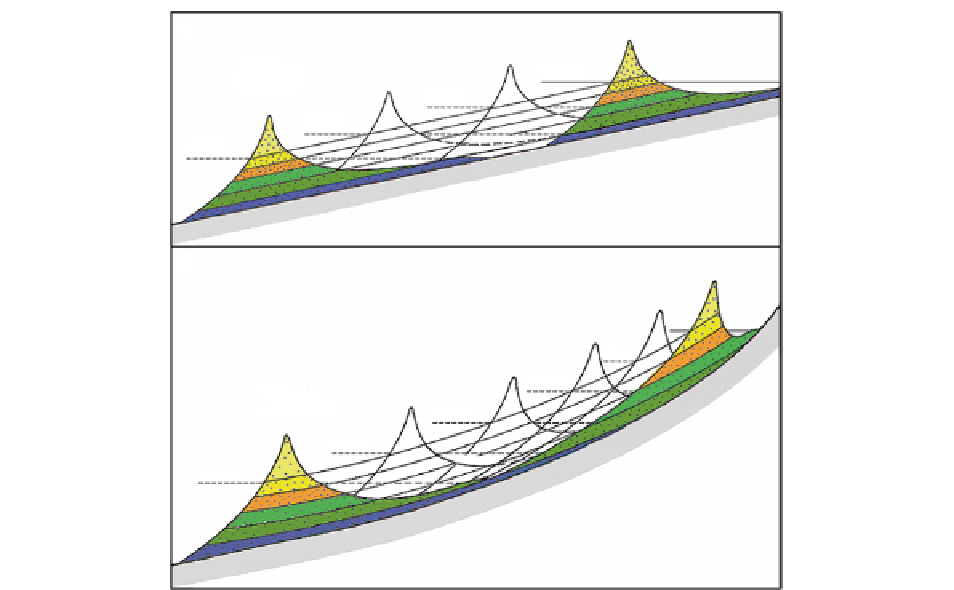Geology Reference
In-Depth Information
a
barrier
island
MSL 4
MSL 3
MSL 2
isochron
MSL 1
b
6
MSL 5
MSL 4
barrier
island
MSL 3
MSL 2
MSL 1
Fig. 10.29
Schematic conceptual models illustrating the strati-
graphic situation in the case of a uniformly sloping (
a
) and a
progressively steepening (
b
) shore. Note the squeezing out of
individual sedimentary facies on the landward side in the latter
case (Modified after Flemming and Bartholomä
1997
)
compensation of the deficit created by sea-level rise.
The difference between Figs.
10.28a, b
mainly con-
cerns the stratigraphy below the barrier island and the
shoreface, the vertically aggrading back-barrier tidal
flat systems (yellow colour) being more or less identical.
As outlined earlier, the back-barrier deposits can also
be identified by their progressive shoreward fining
grain-size gradient which is not shown in Fig.
10.28
. If
less sediment is supplied from external sources than
required to compensate sea-level rise, then the remain-
ing deficit must be replaced by sediment from the
existing reservoir. This involves moving sediment from
the beach and upper shoreface toward the back-barrier
basin. As a consequence, the barrier island is forced to
migrate landward across its own back-barrier tidal flat.
In the case where the remaining deficit is small, most
of the depositional sequence is retained, the loss in the
stratigraphic section being restricted to upper shoreface,
beach, and barrier sands (Fig.
10.28c
). The less sedi-
ment is available from external sources, the larger the
remaining deficit and the fewer the depositional
sequences retained in the stratigraphic section. At the
same time the speed of barrier island migration
increases. This may evolve to the point where no sedi-
ment is available from external sources and the deficit
now has to be replaced entirely from the existing
sediment reservoir (Fig.
10.28d
). In this case the whole
depositional sequence is progressively lost and only
the final highstand deposit is retained for potential
preservation in the rock record. The marked difference
in depositional architecture produced by the variable
interplay between sediment supply and sea-level
rise thus turns out to be a powerful diagnostic tool for
the interpretation of the stratigraphic record in terms of
the temporal sediment budget evolution and the rate of
sea-level change.
Thus far, the retention or loss of back-barrier depos-
its in the course of sea-level rise has been considered
only in terms of changes in the sediment budget. In
such cases, the progressive loss of sedimentary facies
occurs on the seaward side, the capping barrier sand
being eliminated first, the basal salt marsh last
(Fig.
10.29a
). This model applies to situations where a
transgressive barrier-island depositional system

